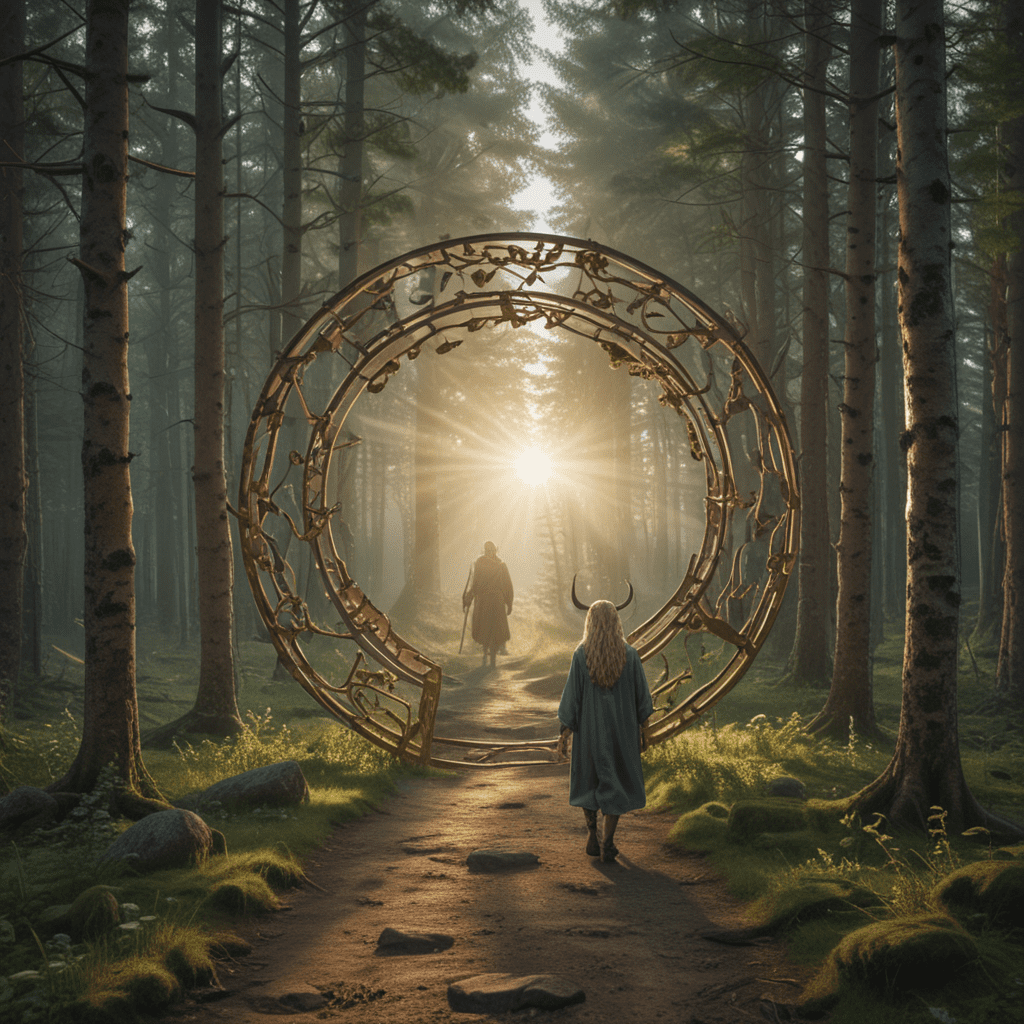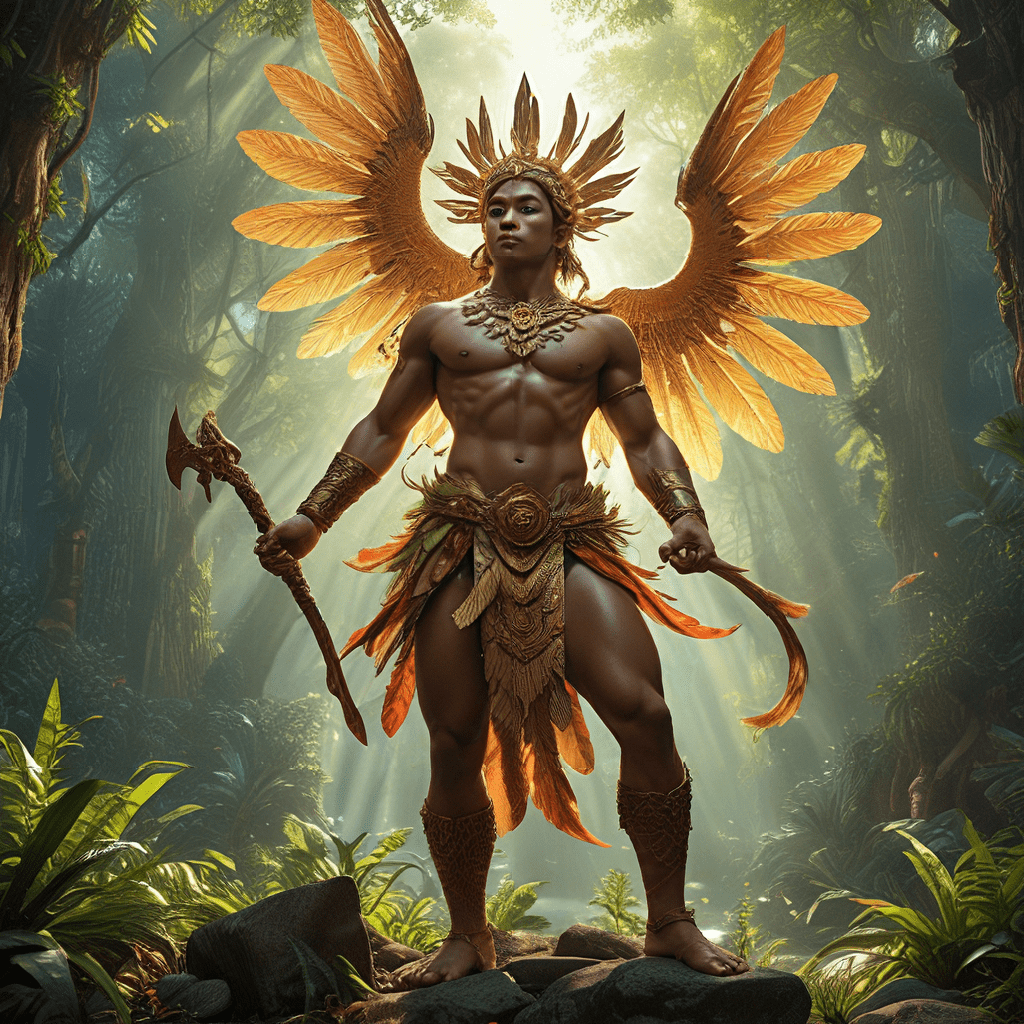I. Introduction
Persian Mythology: A Cultural Treasure
Persian mythology, a vibrant tapestry of heroes, gods, and mythical creatures, has captivated audiences for centuries. Its rich narratives and profound wisdom have shaped not only the cultural landscape of Iran but also influenced countless aspects of modern culture worldwide. From the epic tales of Rostam and Sohrab to the mystical teachings of Zoroastrianism, Persian mythology continues to resonate with contemporary audiences, offering invaluable insights into human nature, societal values, and the enduring power of storytelling.
Enduring Influence: A Legacy that Lives On
The influence of Persian mythology on modern culture is undeniable. Its timeless themes of heroism, love, betrayal, and the struggle between good and evil continue to inspire artists, writers, and filmmakers across the globe. From the haunting melodies of classical Persian music to the intricate designs of Persian carpets, echoes of ancient myths can be found in a myriad of art forms. Even in the digital age, Persian mythology continues to find new life through video games, graphic novels, and online communities dedicated to preserving and reinterpreting these legendary tales.
II. Heroes and Legends: Immortal Tales of Valor and Tragedy
Rostam and Sohrab: A Timeless Tale of Father and Son
At the heart of Persian mythology lies the epic poem, Shahnameh, a vast collection of stories chronicling the history of Persia from its mythical origins to the Islamic conquest. Among its most celebrated characters are Rostam, a legendary hero renowned for his strength, courage, and unwavering loyalty, and Sohrab, his son, a valiant warrior raised in a rival kingdom. Their tragic encounter, a masterpiece of storytelling, explores themes of familial bonds, mistaken identity, and the devastating consequences of war. Rostam and Sohrab's story has captivated audiences for centuries, inspiring countless adaptations in literature, art, and film.
Beyond Rostam: A Gallery of Legendary Figures
The Shahnameh brims with captivating heroes and villains, each contributing to the rich tapestry of Persian mythology. Zal, the abandoned child raised by a mythical bird, embodies resilience and determination. Siavash, the epitome of purity and innocence, represents the tragic cost of betrayal. Kay Kavus, the arrogant king, serves as a cautionary tale against hubris. These timeless characters, with their flaws and complexities, continue to resonate with modern audiences, offering invaluable insights into human nature and the challenges faced by individuals and societies.
VI. Influence on Western Culture: A Cross-Cultural Exchange
The influence of Persian mythology on Western culture has been profound and far-reaching. From the works of ancient Greek writers to the modern fantasy genre, echoes of Persian myths can be found in countless literary works, artistic masterpieces, and musical compositions.
Literary Echoes:
- "The Odyssey" by Homer: The epic poem draws inspiration from the Persian myth of Rostam and Sohrab, particularly the motif of a father unwittingly killing his son.
- "The Arabian Nights": This collection of stories incorporates elements from Persian mythology, including references to Simurgh, a mythical bird, and the Seven Labors of Rostam.
- "Paradise Lost" by John Milton: The epic poem borrows from the Zoroastrian concept of Ahriman, the embodiment of evil, to depict Satan.
Artistic Masterpieces:
- "The Starry Night" by Vincent van Gogh: The painting's swirling brushstrokes and vibrant colors evoke the otherworldly beauty of Persian miniature paintings.
- "The Rubaiyat of Omar Khayyam" by William Blake: The illustrations in this edition of the Persian poet's work reflect the intricate patterns and motifs found in Persian art.
- "The Metropolitan Museum of Art": The museum's collection boasts numerous artifacts and artworks showcasing the influence of Persian mythology, including ceramics, textiles, and metalwork.
Musical Compositions:
- "Scheherazade" by Nikolai Rimsky-Korsakov: The orchestral suite draws inspiration from the tales of "The Arabian Nights," which incorporate elements of Persian mythology.
- "Turandot" by Giacomo Puccini: The opera's plot and characters are loosely based on the Persian fairy tale of "Turandot," a princess who sets impossible tasks for her suitors.
- "The Beatles' "Within You Without You": The song's lyrics reflect the influence of Indian classical music, which shares close ties with Persian musical traditions.
VII. Contemporary Adaptations: Reimagining Ancient Tales
Modern adaptations of Persian myths have breathed new life into these ancient stories, reinterpreting them for contemporary audiences.
Film and Television:
- "The 300 Spartans" (2006): The film draws inspiration from the Battle of Thermopylae, which is recounted in the Shahnameh.
- "Prince of Persia: The Sands of Time" (2010): The video game and its film adaptation are loosely based on the Persian myth of the Prince of Persia.
- "Aladdin" (2019): The live-action remake of the Disney classic incorporates elements from the Persian tale of Aladdin and the Magic Lamp.
Video Games:
- "Age of Empires II: The Conquerors": The expansion pack features the Persian civilization, allowing players to experience their unique units, technologies, and historical figures.
- "Civilization VI": The game includes Persia as a playable civilization, with Cyrus the Great as its leader.
- "Prince of Persia: The Sands of Time": The video game series reimagines the classic Persian myth in a modern setting, with acrobatic combat and time-bending mechanics.
Graphic Novels:
- "Persepolis" by Marjane Satrapi: The graphic memoir depicts the author's childhood in Iran during the Islamic Revolution, drawing on elements of Persian mythology and history.
- "The Sandman" by Neil Gaiman: The comic book series features Dream, one of the Endless, who is inspired by the Zoroastrian deity Ahura Mazda.
- "Shazam!": The superhero's powers are derived from six mythological figures, including Shazam, the ancient wizard who grants him his abilities.
VIII. The Importance of Preservation: Safeguarding Cultural Heritage
Preserving and promoting Persian mythology is crucial for safeguarding this rich cultural heritage and ensuring its continued relevance for future generations.
Initiatives and Organizations:
- The Shahnameh Foundation: Dedicated to preserving and promoting the Shahnameh, the foundation sponsors educational programs, research projects, and cultural events.
- The National Library of Iran: Houses a vast collection of manuscripts and texts related to Persian mythology, including貴重な.
- UNESCO: Recognizes the Shahnameh as a Masterpiece of the Oral and Intangible Heritage of Humanity, highlighting its cultural significance.
Individual Efforts:
- Storytelling: Sharing Persian myths with children and adults through storytelling sessions, workshops, and educational materials.
- Artistic Expression: Using various art forms, such as painting, music, and dance, to reinterpret and reimagine Persian mythology for contemporary audiences.
- Digital Preservation: Creating online repositories and digital archives to ensure the accessibility and preservation of Persian mythological texts and artifacts.
IX. Conclusion: A Legacy that Endures
Persian mythology continues to captivate and inspire audiences worldwide, offering timeless insights into human nature, societal values, and the power of storytelling. Its enduring influence on modern culture is a testament to the universality of its themes and the enduring appeal of its heroes, legends, and mystical traditions. As we delve deeper into the rich tapestry of Persian mythology, we gain a deeper understanding of our shared human experience and the enduring power of imagination.
X. Further Exploration: A Journey into Ancient Persia
Books:
- "The Shahnameh" by Ferdowsi
- "The Persian Myths" by John Lennard
- "The Adventures of Hatim Tai" by Hasan bin Hasan
Websites:
- The Shahnameh Foundation: www.shahnameh.org
- The National Library of Iran: www.nlai.ir
- UNESCO Intangible Cultural Heritage: ich.unesco.org



